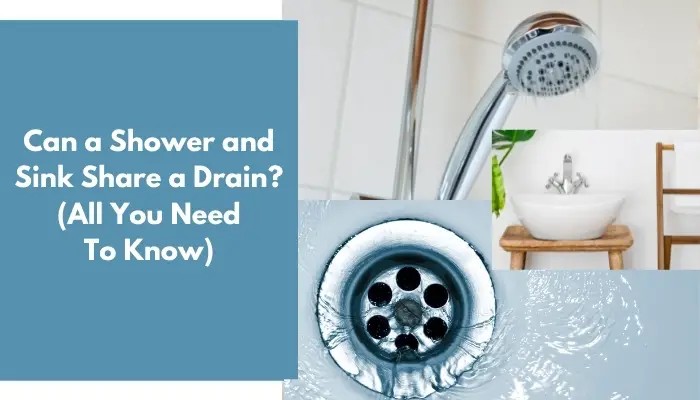Have you taken a good look at your bathroom and wondered how does everything in this room work. How does the connection between the sink, shower, and toilet function?
Well, plumbing and fixtures are not everyone’s cup of tea.
You may have bought the house when everything in it is all set and ready, but it will be beneficial to know some of the wonders of how things work and function.
Typically, there is more than one drainage in the bathroom. Some people find it inconvenient and expensive to run an individual drain for the shower, sink, and toilet.
They ask plumbers to connect each fixture’s drain lines under the bathroom floor, and they just install one vent. This vent will allow water and waste to flow on the house’s main sewer line.
Experimenting on your shower drain and sink drain can be a bit complicated because the results vary on a case-to-case basis.
There are several contributing aspects to consider, like floor slope, drainpipe sizes, its after-effects, and more. If you are searching for a direction on how a shower and sink can share a drain, then read on.
Contents
Is It Possible to Have the Same Drain for the Shower and Sink?
Yes, the drain for the shower and the sink can be the same. The shower and sink can use the same drain pipe if it is well below the sink and shower level.
The pipe must also be big enough to handle the combined water flow because if not, you will run the water’s risk to flow from the pipes of each other instead of it flowing out.
How to Convert a Sink Drain Into a Shower Drain?
Converting a sink drain into a shower drain can be an excellent decision to utilize the current plumbing of it, or you just want it to be more functional. This process will also utilize the space of your bathroom.
Your number one concern in turning your sink drain into a shower drain is that a sink drain typically has a 1½-inch drainpipe while a shower drain has a 2-inch drainpipe.
You have to change the drainpipe into a bigger one, but this can be solved quickly. You just have to buy a new set of drainpipes and change it.
Next is that your shower drain must be centered on the shower stall. If your sink’s drain is far from your shower, then it would be more difficult.
If the vent of the sink is close to the main stack, then it will be a lot easier to convert it into a shower drain.
Connecting Shower Drain to Sink Drain
Converting a sink drain into a shower drain may not work for your house, so here is an alternative. Why not connect your shower drain to your sink drain?
This process can be a great way for you to avoid installing another drain. All you need is an existing sink drain, and you are good to go.
Materials:
- Hacksaw
- 2-inch PVC pipe
- 1 ½ -inch PVC pipe
- Y-type connector
- PVC primer and cement
- PVC adhesive
- Screwdriver
- Socket wrench
- Rubber connectors
- Turn off your water source to guarantee that you will not be wasting water once you are going through your project.
- Look for the sink drain and choose the spot where you want to connect your shower drain. Take note that the sink’s drain will enter the shower’s drain from above. The 1 ½ inch opening of the sink drain extends upward to the 2-inch horizontal drainpipe in order to avoid backflow issues.
- Get a plastic pipe the same diameter as the sink’s drain and cut it into two 6-inch long pipes using the hacksaw. The two pieces will be fastened to each end of the y-connector, which will be your new fitting. Use a PVC primer and cement to connect the pipes to the wye-connector firmly.
- Route your shower drainpipe to the plumbing vent. Using the PVC adhesive, glue the new fitting to the shower drainpipe and connect the other end to the plumb vent.
- Get your new fitting and attach it to the sink’s drainpipe and shower’s drain pipe connected to the plumbing vent with the rubber connectors. Tighten it using a screwdriver or socket wrench.
- Open the water source and check if there are leaks.
Can You Switch the Shower and Sink Drain?
If you are refurbishing your house or just bought a place where you want to add your design, you may be thinking of remodeling some fixtures.
As stated previously in this article, you can switch the drain of the shower and the sink.
Depending on your country’s building code or how challenging your floor plan is, you can definitely switch the two. If the sink and shower location permits you to do so, it can save you a lot of work.
There are two viewpoints to a coin in every situation.
While you are preparing to fix and combine your shower and sink drain, here are some of the benefits and drawbacks that you may have when you have a shared drain.
- The system of having a shared drain makes it an economic arrangement because you just have to maintain a single pipe and single stack system in your bathroom. If there is any problem with the pipes, you can easily detect where it is coming from.
- Since all your water and waste matter is discharged in one pipe, you will also just be using one soil pipe. It can conserve you a lot of cash, and it is more convenient to install only one soil pipe.
- It requires less space for pipes and ducts, so if your floor plan is not that spacious, having a shared drain can benefit you.
- There is a risk of water and sewage to backflow in case there is a blockage on the pipe. There will be instances where there is water coming up to your shower, and this problem can be a hassle, especially if your pipes are prone to blockage.
- If you did not cap off the pipes correctly, there would be sewer gases or emission problems that you may encounter. The foul smell in the bathroom can be unbearable until you fix the problem.
Summary
We are not professional plumbers, so it would be best to prepare for the worst-case scenario, especially if you do not have a carefully laid out plan.
Before you proceed with your drain project, make sure that you equip yourself with all the necessary materials and procedures to be sure that it will not turn into a shower disaster.
If you do not have enough knowledge to change your drain on your own, you might end up ruining your bathroom. Pipes and sewers can be complicated.
Whether it is for renovation or just want to try out something new, it is still advised that you seek a professional plumber.




